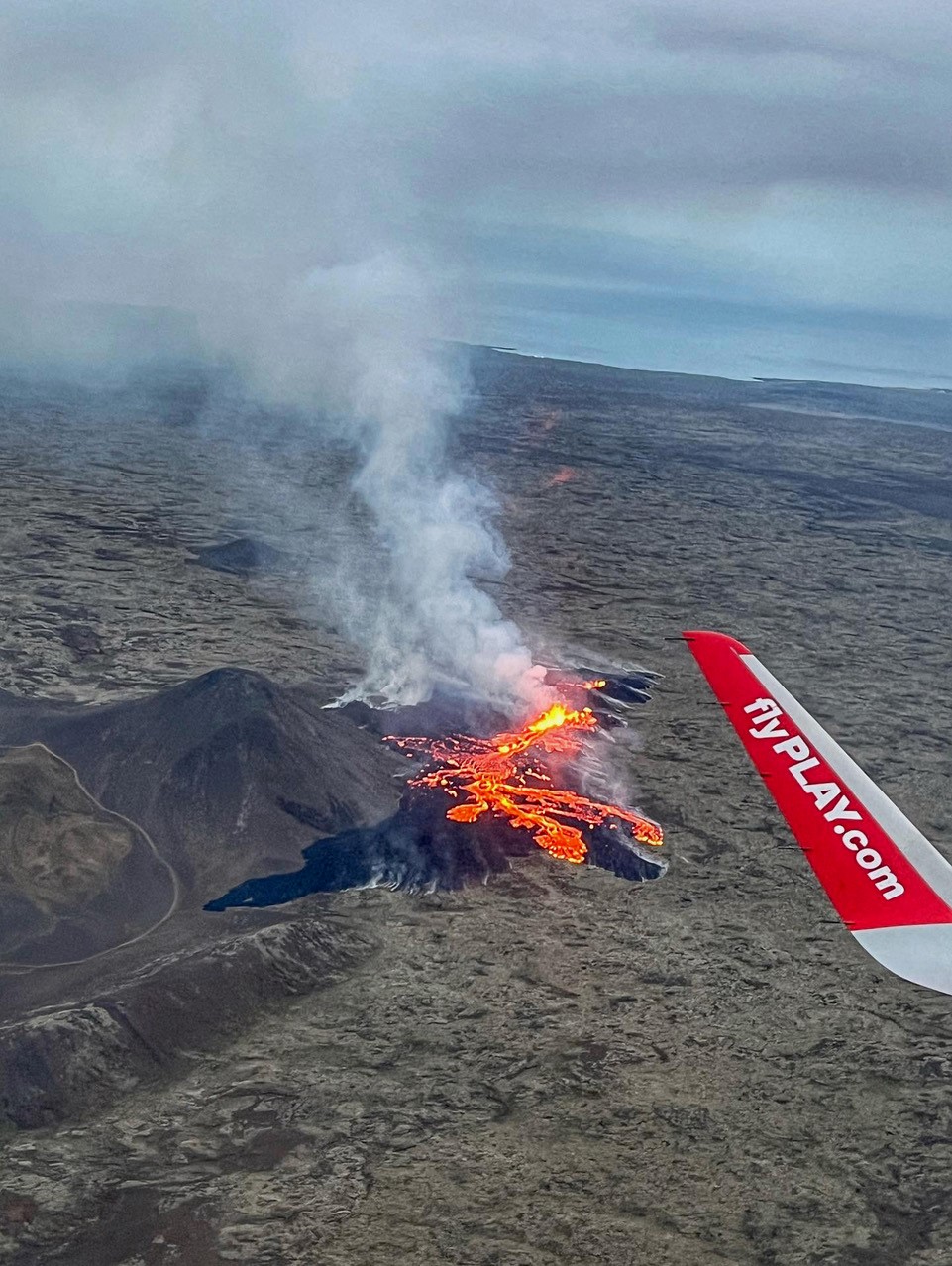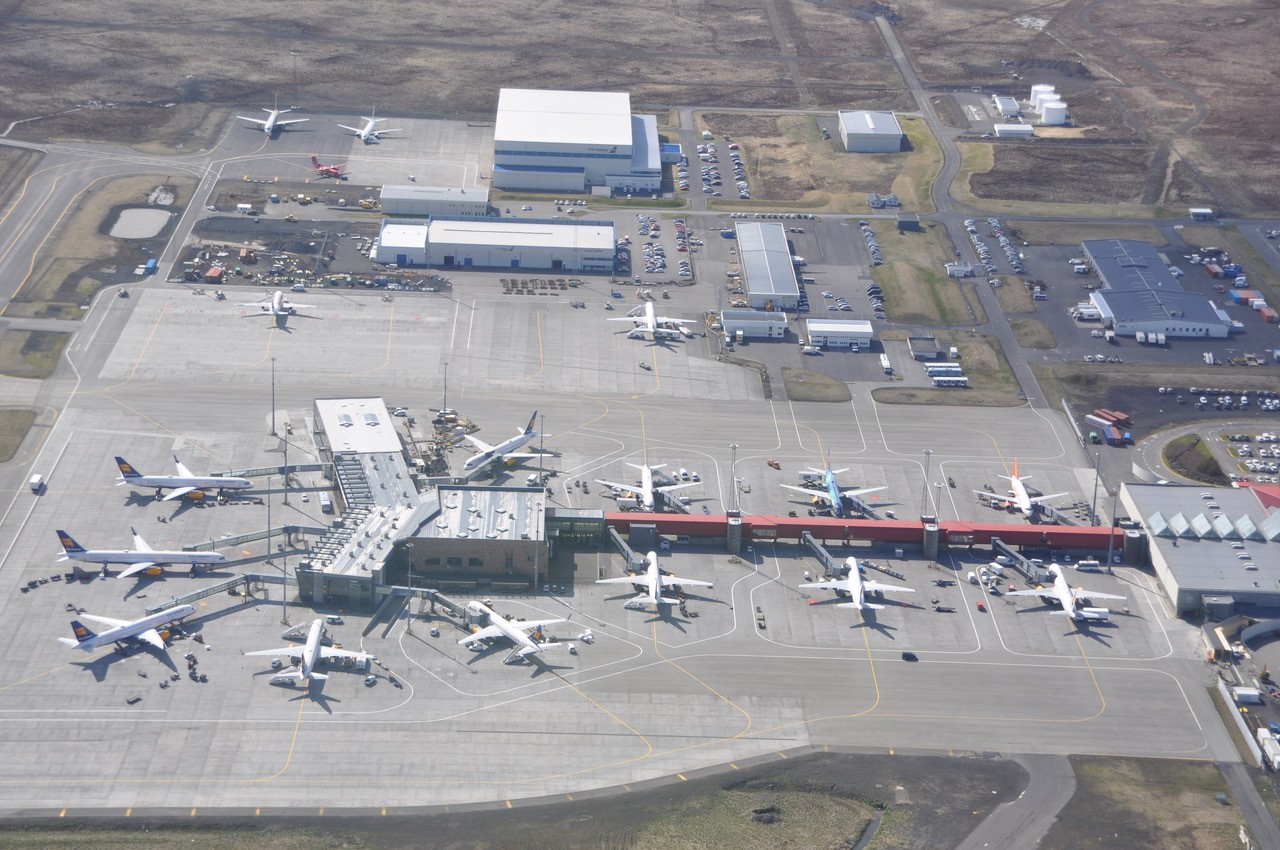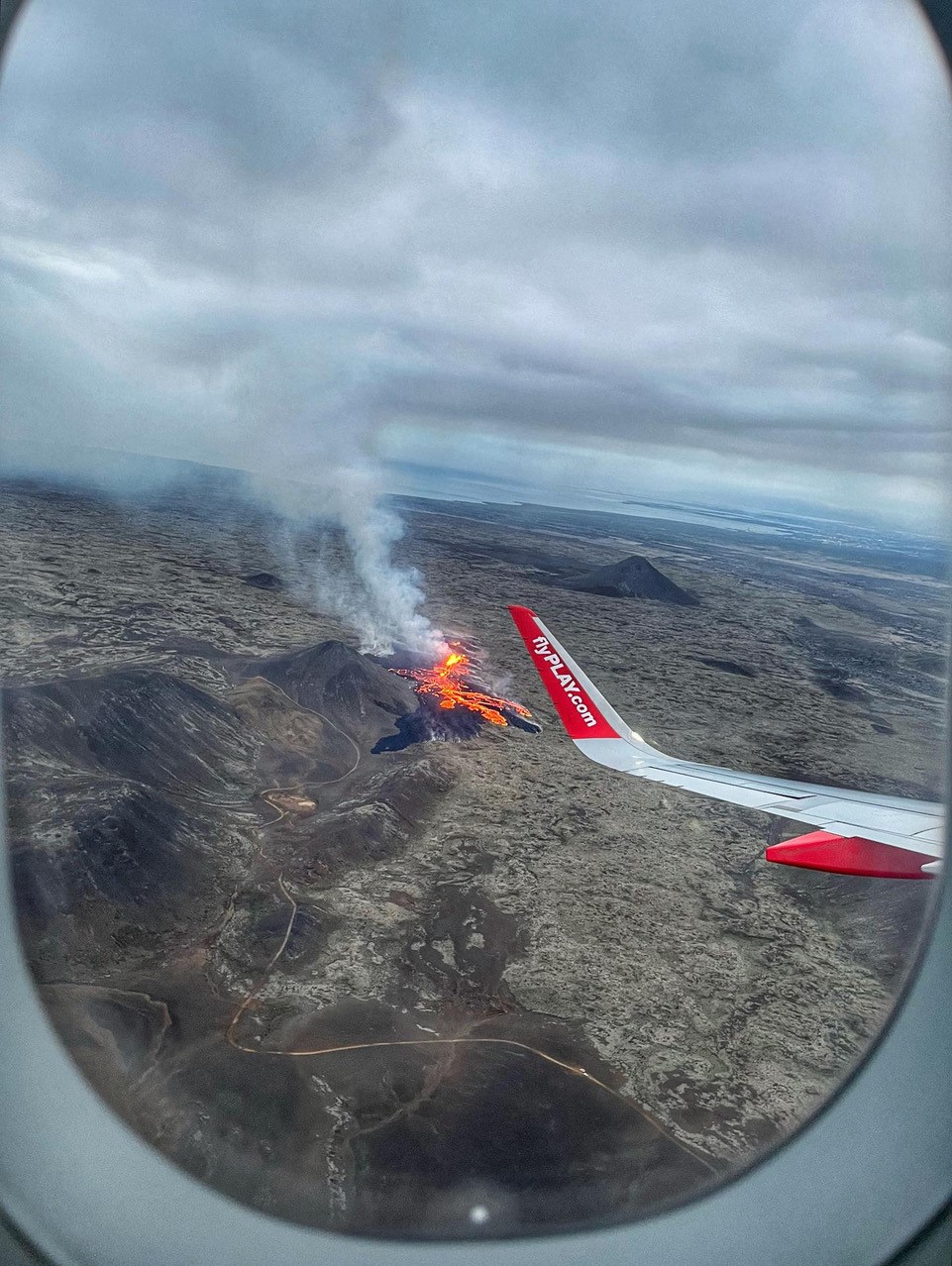Iceland's Eruptions: Play Soars On Tourism Boom
04 September, 2024
5 min read

Airlines in this article
By joining our newsletter, you agree to our Privacy Policy


Airlines in this article
Passengers on their way to Iceland’s main Keflavik Airport have been treated to some spectacular sights - if they were lucky.
In December 2023, a volcanic eruption at Fagradalsfjall, less than 30 kilometers from the international airport, sent up red-glowing lava in to the air, some as high as 50 meters.
Some pilots of local carriers PLAY and Icelandair took advantage of their approach path passing nearby to do sightseeing detours, leaving their passengers scrambling around the windows gazing at the spectacle in awe. In May, another major eruption of the same system provided more spectacular sights.

The Disruptive Nature of Iceland's Volcanic Activity
As desirable as this seems as an experience, for local airlines, the geological nature of their home country island can be a burden. Almost the entire world knows this since April 2010, when a forceful eruption of Eyafjalljökull volcano from underneath a thick glacial ice cap threw nearly all of Europe’s aviation into turmoil.
The eruption created a massive ash cloud filled with fine particles that were highly dangerous to jet engines, spreading high into the atmosphere and across the continent. As a result, nearly all of Europe’s airspace was closed for eight days—the most extensive closure since the Second World War. More than 100,000 flights were canceled, leading to a global economic loss of over US$5 billion.
Earlier this year, Icelandic airlines again blamed volcanic activity for their losses. Passengers especially from the US and the UK were reluctant to book flights via Keflavik to travel between Europe and North America – which is the main market for Icelandair and low-cost rival PLAY. There had been earthquakes and seismic activity for months, one town, Grindavik, had to be completely evacuated and remains a ghost town until today.
While the airport is located just 25 kilometres away, air traffic was never disturbed. However, the airports electricity and hot water supply was briefly cut by line ruptures due to the seismic activity. As Icelandic buildings are heated by natural hot-spring water, this meant 24 hours of a chilly terminal building while extra generators and water-heaters were installed.
But all this scared off passengers to fly to or via Iceland, and the airlines felt it. In a recent interview with AirlineRatings.com Einar Örn Ólafsson, CEO of PLAY stated..
“In international news it came across as if there was a state of emergency in all of Iceland. It’s our own fault as we have failed in explaining to people how wonderful and spectacular such events are and absolutely not dangerous outside the restricted zone, nobody has to be afraid. Iceland is entirely safe, the airport was always open and nobody was compromised in Reykjavik.”
Even with water and power having to switch to backup systems, PLAY achieved a 94% on-time performance.

Near Gate A14 in Keflavik’s terminal, a nondescript door and stairway lead to PLAY’s operations control center. Alongside the usual monitoring of flights and transfers, there is a unique set of screens displaying live images of glowing craters. Webcams provide real-time footage of key volcanic activity zones nearby. Iceland is home to over 30 active volcanic systems—more than any other place on Earth. Since 1902, there have been 27 eruptions, the most recent one occurring in December 2023.
"The industry has learned a lot from the 2010 eruption, and in a positive way," says Andri Geir Eyjólfsson, Executive Director of Operations at PLAY. "The Iceland Met Office now has much more sophisticated equipment to measure ash volumes in the air. For the eruptions we’ve seen since late last year, they only closed the airspace for 15 to 20 minutes while measuring the ash, and fortunately, none of these eruptions had a significant amount of ash," Eyjólfsson explains.
"Our forecasts for ash movement are now more accurate, and we have a better understanding of ash volumes in the air, which helps us navigate around it. If an eruption occurs, within half an hour we are already in discussions with the Iceland Met Office, and by then, they have published all the forecasts we need to make informed decisions." Importantly, airlines themselves now decide how to respond: "Since 2010, regulations have changed, and it’s now up to the operator to decide whether to fly or not, based on the information provided," Eyjólfsson adds.
There are also now well-developed procedures to follow in such events: "Back in 2010, airlines didn’t have a volcanic eruption procedure manual and were unsure of how to respond. After that, it became mandatory to have such protocols in place. When the eruptions happened last year, everyone at the company knew what to do—whether it was selecting alternate airports or determining fuel requirements. It’s now an established process," Eyjólfsson notes enthusiastically.

Aircraft engines and operating procedures have also significantly advanced, which is crucial for handling volcanic scenarios. PLAY operates a fleet of new Airbus A320neos and A321neos equipped with CFM’s LEAP engines. "Today, all engine manufacturers have clearer and more definitive guidelines for operating in ash environments, backed by extensive research," says Eyjólfsson. "With the A320neos, we have the technology to monitor engine performance in real time, analyzing live data from 17,000 different parameters on the aircraft." He explains, "Modern engines are not more resistant to ash; when ash gets inside, it turns into glass and clogs the engine. The risk remains, but we now have more data to make informed decisions."
Currently, Iceland has three volcanoes that are "ripe" for the next major eruption, potentially on the scale of the 2010 event. However, when the next eruption occurs, the impact is expected to be much less severe due to the improvements discussed. "Any potential airspace closures will be more limited, allowing us to make more informed decisions on whether to operate," Eyjólfsson asserts.
Eurocontrol conducted an analysis more than a decade after the 2010 Eyafjalljökull eruption. "While the ash cloud in 2010 led to around 104,000 flight cancellations, a similar situation today is estimated to result in only half that number," said Eamonn Brennan, Eurocontrol’s director at the time.
Airlines in this article
Get the latest news and updates straight to your inbox
No spam, no hassle, no fuss, just airline news direct to you.
By joining our newsletter, you agree to our Privacy Policy
Find us on social media
Comments
No comments yet, be the first to write one.




